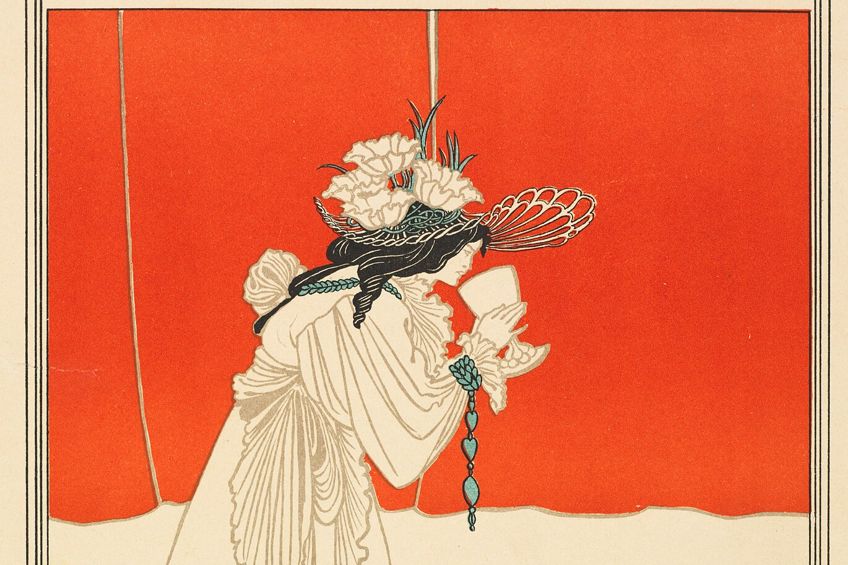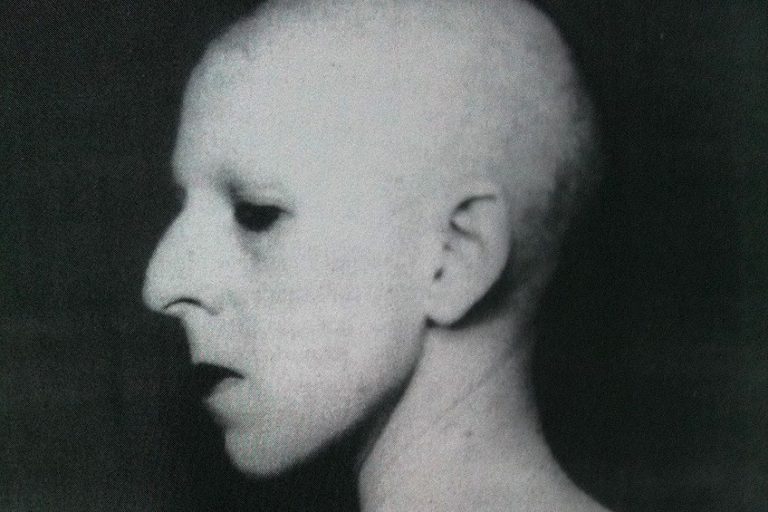Aubrey Vincent Beardsley – The Famous Art Nouveau Illustrator
Rediscover the life and art of Aubrey Vincent Beardsley, whose contributions to illustration and literature shifted societal norms of the day! Victorian illustrator Aubrey Vincent Beardsley was among the most critical artists of the 19th century, whose grotesque illustrations and criticism of Victorian society in Britain steered the development of poster art. But what about the illustrator’s life and career made him so widely recognized, and what are some of his best artworks? In this article, we will delve into the influences and art styles employed in the work of Aubrey Vincent Beardsley, including key artworks, notable exhibitions, and important themes in his work.
In the Life of Victorian Illustrator Aubrey Beardsley
| Artist Name | Aubrey Vincent Beardsley |
| Date of Birth | 21 August 1872 |
| Date of Death | 16 March 1898 |
| Nationality | British |
| Place of Birth | Brighton and Hove, United Kingdom |
| Associated Movements, Themes, and Styles | Symbolism, Art Nouveau, grotesque style, Japanese woodcut, Aestheticism, Decadence, humor, Victorian taboos, gender roles, sexuality, beauty, and consumerism |
| Mediums | Illustration, caricature, drawing, and writing |
| Notable Works |
|
Not all artists were lucky enough to experience success in their lifetime, let alone reach the pinnacle of commercial success as an illustrator in Victorian society. Among the best and most unique illustrators of the 19th century was Aubrey Vincent Beardsley, whose struggle with tuberculosis and endurance despite criticism of his unconventional style, achieved much success during his short life.

One might call Aubrey Vincent Beardsley a modern thinker despite the Victorian era in which he operated. Beardsley specialized in illustration and was most famous for his contributions to Oscar Wilde’s Salomé (1894). A critical artist, Beardsley provided many “modern” gems for his followers to contemplate and avidly addressed issues related to gender roles, beauty, sexuality, and even consumerism in a rather repressed Victorian context.
Through his contributions to posters, advertising, and book illustration, the British artist inspired many modern thinkers across Europe and the United States. What important themes and concepts did Beardsley interrogate, and what are some of his most iconic pieces? Below, we will dive into an in-depth biography, covering his life, art styles, and notable influences.
We will also engage with a few of his best works that capture the artist’s visual language before his tragic death at the height of his career.
Early Life and Education
Aubrey Vincent Beardsley was born in Sussex in England in 1872 to a Clerkenwell jeweler known as Vincent Paul Beardsley and the daughter of a Surgeon Major in the Indian Army, Ellen Agnus Pitt. Beardsley’s parents’ marriage was somewhat unconventional for the time following the class disparity between his mother and his father. Beardsley’s father was viewed as lower in social status since he relied on private income from his grandmother, who was a property developer and was already suffering from tuberculosis.

Beardsley’s mother, on the other hand, was from a well-respected family in Brighton. Beardsley’s father also had to settle a breach of contract with another woman whom he allegedly promised to marry. The artist’s family settled at his mother’s familial home, which is presently located at 31 Buckingham Road. After Beardsley’s birth, the family moved to London, where they experienced much hardship in their later life.
In Beardsley’s childhood, he became known as an “infant musical phenomenon” and partook in a few concerts alongside his sister in 1884. Beardsley then attended the Brighton, Hove, and Sussex Grammar School, and created many drawings, poems, and cartoons, which were published in his school’s magazine over the next four years. Beardsley was also diagnosed with tuberculosis at the age of seven. By 1888, Beardsley secured a job at an architect’s office and later worked at the Guardian Life and Fire Insurance Company.
Beardsley only took up art in a professional capacity by 1891, when he was advised by Pierre Puvis de Chavannes and Sir Edward Burne-Jones to pursue art and by 1982, he enrolled at Westminster School of Art, where he was taught by Fred Brown.
Career Development and Style
Aubrey Beardsley’s artistic journey was sparked during a trip to Paris in 1892 when he discovered the bold poster designs of Henri de Toulouse-Lautrec and the Japanese woodblock printing styles. This marked Beardsley’s early career as he received his first commission in 1893 for a work titled Le Morte d’Arthur, which was only the beginning of his legacy and his “Yellow Book” era. Beardsley collaborated on many projects, including the translation of Lucian’s True History, where he created many intricate illustrations that boosted his recognition.
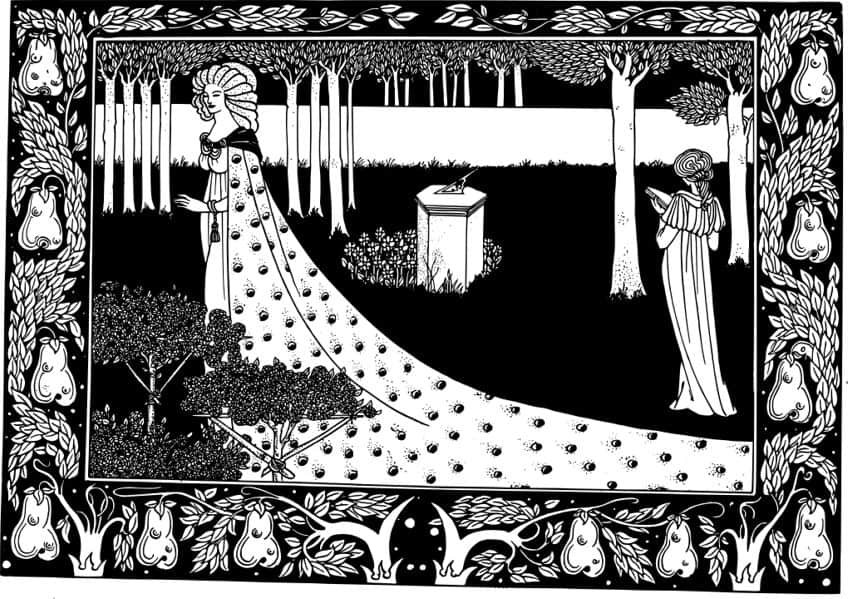
Beardsley’s career in illustration was not without controversy throughout his six-year streak, which saw an evolution and thematic shift in his style. Alongside the writer Henry Harland, Beardsley co-founded The Yellow Book and worked as an art editor and illustrator, providing his skillset to the publication. Of important note was Beardsley’s signature style, which was rooted in Aestheticism and later encompassed “darker” and more controversial themes. Beardsley was also known to satirize Victorian societal values and sexual norms through his use of the grotesque erotic style, characterized by exaggerated features on human figures and perverse imagery.
He also tackled themes such as mythology and history in his illustrations for Oscar Wilde’s Salome and Aristophanes’ Lysistrata, which earned him significant recognition and criticism.
Aubrey Beardsley and Aestheticism
Beardsley once stated that “people hate to see their darting vices depicted, but vice is terrible ought to be depicted”. Beardsley was widely acknowledged as a pioneer of Aestheticism, which took shape in his childhood when he encountered the style of the Pre-Raphaelite artist Edward Burne-Jones. In 1893, Beardsley was commissioned to produce ink illustrations for Sir Thomas Malory’s Morte d’Arthur, which became a key moment in his artistic career as he used the project to showcase his unique and intricate drawing style, from in-text embellishments to ornamental border designs.
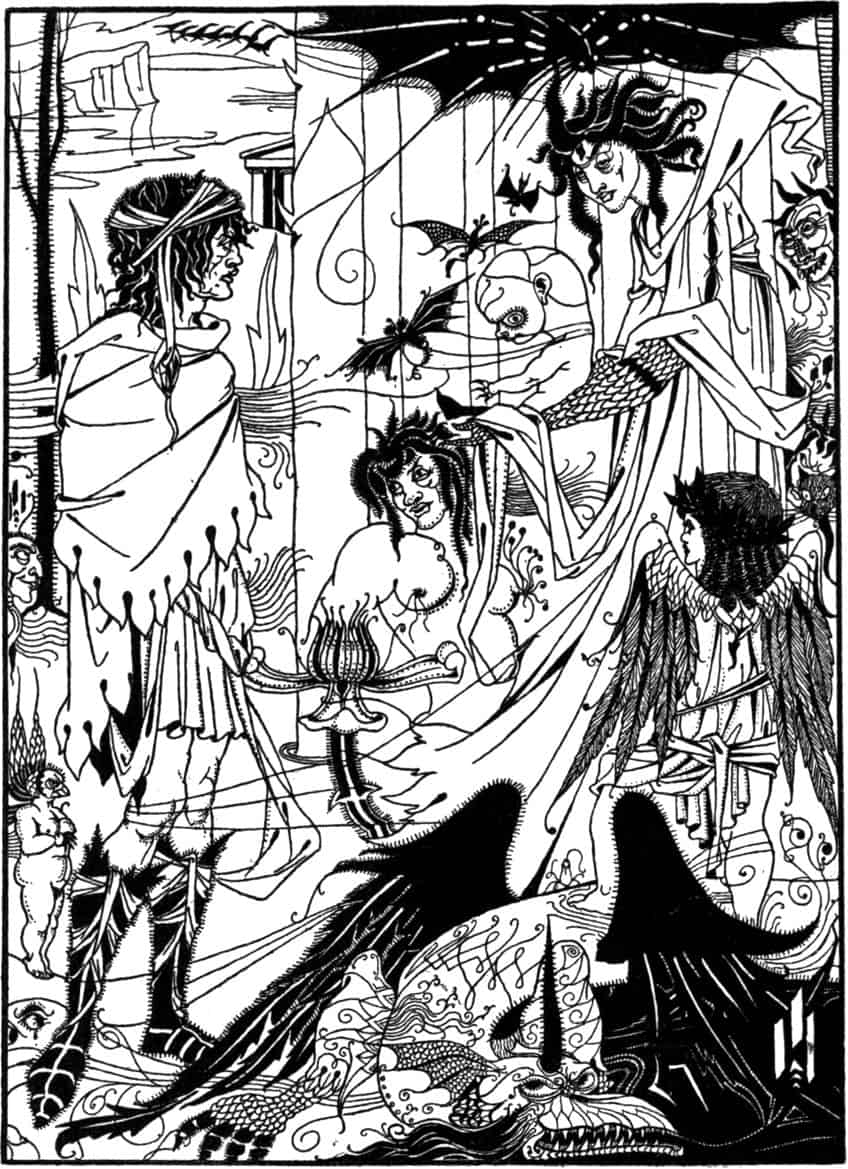
To better understand Beardsley’s contribution to illustration, one has to understand the context of Aestheticism in the 19th century, which primarily focused on the purpose of art as a tool for demonstrating beauty and evoking an emotional response over politics or moral messages. Another way to think of Aestheticism is to recall the phrase “beauty for beauty’s sake”, which Aestheticism promoted and relied on the sensory experience of art to encourage intellectual and visual pleasure. In Beardsley’s case, his use of visuals inspired by Pre-Raphaelite, Symbolist, Art Nouveau, and Decadent styles was channeled into his illustrations and designs as a form of individual expression. Part of Aestheticism was its overlapping ideals shared with Decadence and Symbolism, which explored themes of fantasy and mysticism.
Beardsley’s integration of such themes was his reaction to Victorian social and moral conventions, which aimed to challenge the notion that art should necessarily serve moral or didactic functions.
Notable Influences on Aubrey Beardsley’s Art
There are many interesting elements about Beardsley’s illustrations and printed drawings that make them unique and complementary to the authors he worked with. One might even add that the success of plays like Salomé may have also been enhanced by the contributions of Beardsley who brought the characters to life. Aubrey Beardsley was known to be an eccentric yet incredibly private individual, who once claimed that if he were not grotesque, then he was nothing. Beardsley’s struggle with tuberculosis was felt throughout his life, yet this did not stop him from continuing his work, even amid criticism and allegations surrounding his sexuality or illustrations. Beardsley was hyper-fixated on the style and idea of portraying the grotesque. But what does this mean?
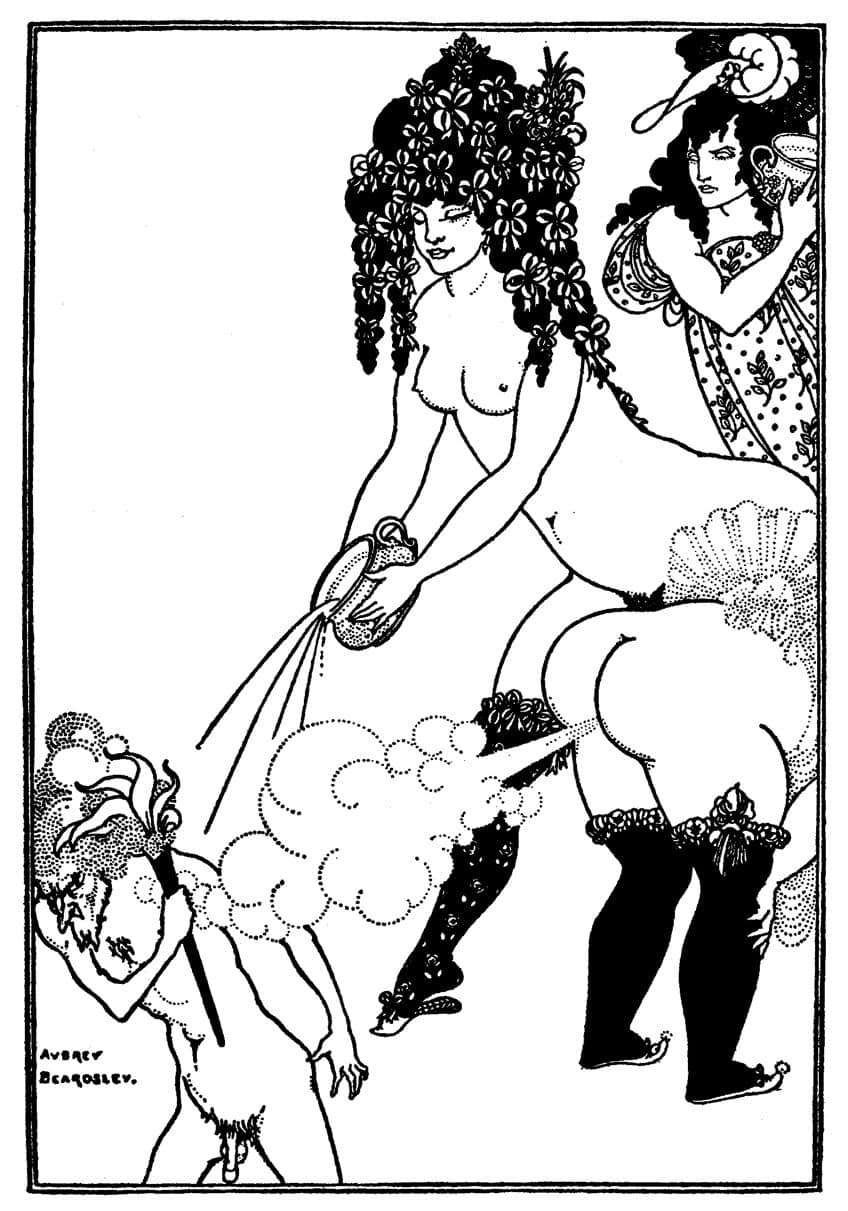
During the Victorian era, a distinct style known as the grotesque art style emerged to embrace representations of the bizarre and fantastical elements of life. This was perhaps the most revolutionary departure from traditional approaches to illustration since it employed distorted elements and was focused on the macabre aspects of life and visual art. It was an imaginative way of viewing the world that also acknowledged the darker parts of society that were often viewed as taboo or shoved under the bridge. Aubrey Beardsley was pivotal in popularizing the style of the grotesque in illustration and poster art in the late 19th century through his contributions to caricature and illustration.
His approach was largely unconventional as he chose to focus on bolder lines, complex details, and bizarre forms of representation that challenged 19th-century aesthetics.
Among these characteristics of Beardsley’s art was his use of exaggerated forms and elongated figures that capture his signature style, most notable in his black and white illustrations. The grotesque was almost an early form of dark Surrealism, which confronted socially taboo subjects like sexuality through symbolism. Beardsley’s choice to remove himself from the mainstream visual canon in Victorian society thus played a crucial role in normalizing the possibility of exploring more avant-garde forms of representation and introducing the grotesque into fine art to influence the development of other movements like Art Nouveau.
Death and Legacy
Towards the final chapter of his life, Aubrey Vincent Beardsley suffered from a hemorrhage in December 1896, which left his health in a precarious and dwindling state. In 1897, he converted to Catholicism and relocated to the French Riviera, where he died a year later. Aubrey Vincent Beardsley died from tuberculosis on 16 March 1898 at the Cosmopolitan Hotel in Alpes-Maritimes, France at the age of 25.

His legacy was undoubtedly impactful and extended into the next two centuries as his influence was held over many French Symbolists and followers of the Art Nouveau and Poster Art movements. Beardsley’s passion for caricature and political satire was a notable example of how forward-thinking artists challenged societies and systems that otherwise largely ignored and criticized anything different from the norm. His engagement with controversy even extended beyond his death at a 1966 exhibition of his printed works held at the Victoria and Albert Museum, which resulted in a legal controversy surrounding the display of inappropriate images and a similar issue with another private gallery.
The famous illustrator was also the subject of a drama in 1982 by John Selwyn Gilbert, who was played by John Dicks and revolved around the artist’s career and affiliation with Oscar Wilde and his arrest.
In the same year, another documentary was released by the BBC on the artist and his life’s work, followed by a feature on the album cover art of The Beatles’ iconic album Sgt. Pepper’s Lonely Hearts Club Band. In 2020, the BBC also released another documentary led by Mark Gatiss on Aubrey Beardsley, which ran simultaneously with a show of Beardsley’s work at Tate Britain.
Famous Illustrations by Aubrey Vincent Beardsley
Aubrey Beardsley’s career was short-lived yet his work was immensely influential to many early modern artists who were inspired by his unique view of the grotesque. Below are a few famous Aubrey Beardsley artworks to help you visualize the artist’s style and approach.
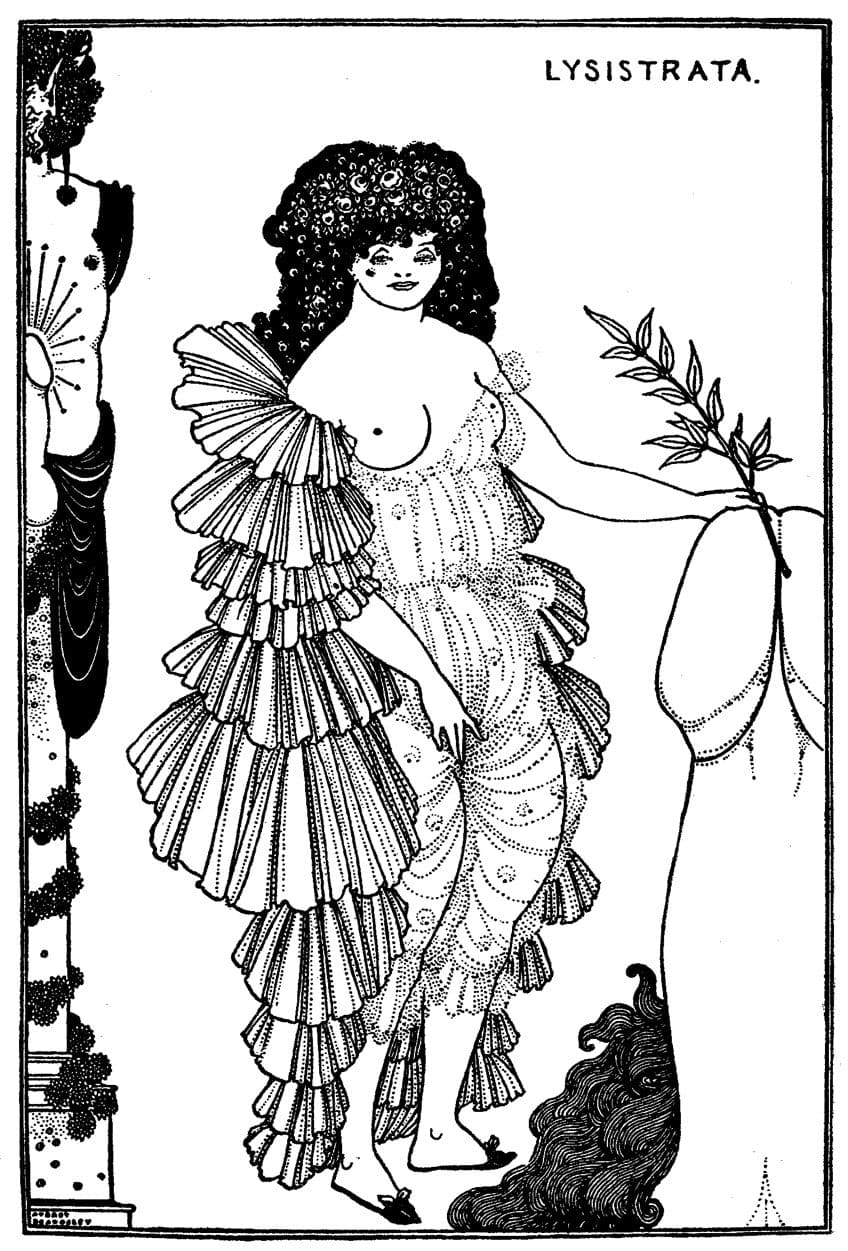
The Woman in the Moon; Frontispiece for ‘Salomé’ (1894)
| Date | 1894 |
| Medium | Black and white line block print on Japanese vellum |
| Dimensions (cm) | 22.5 x 15.7 |
| Where It Is Housed | Victoria and Albert Museum, London, United Kingdom |
The Woman in the Moon is perhaps one of Beardsley’s most famous illustrations from Oscar Wilde’s play Salomé (1894). The illustration portrays a nude man next to a woman in a gown. The two figures gaze up at a moon that contains a caricature of the writer’s face, superimposed with a rose and somewhat hidden in a shroud of black clouds. Beardsley’s name stirred quite the controversy, as one might imagine for conservative Victorian society, in terms of its sexual elements and display of nudity. His unbalanced and tense compositions also amplified the bluntness of his approach to expressing sexuality, which was also harshly criticized by the press which commented on his work as “repulsive”. The success of his work was much owed to the scandal factor of his illustrations. Among the many popular illustrations from Salomé was also the scene where the character caresses the beheaded head of John the Baptist, which was also reproduced by an art publication known as The Studio.
It was Beardsley’s innovative use of the grotesque and decadent style in illustrating the character that led to his commission from Wilde’s publisher.

Isolde (1895)
| Date | 1895 |
| Medium | Color lithograph |
| Dimensions (cm) | 22.8 x 14.2 |
| Where It Is Housed | The Cleveland Museum of Art, Ohio, United States |
Isolde is an example of one of Beardsley’s color works printed as a lithograph, and depicts a female protagonist from a Medieval romance in the context of a love triangle. Beardsley was often inspired by literature which led him to explore a more fluid and sinuous style throughout the 1890s. Most of his works appear alongside texts and books, however, this print was featured in The Studio as a bonus artwork. One can also admire Beardsley’s skillful use of negative and positive space coupled with the bold orange-red hue and simple elegant lines, which truly evoke the influences of ukiyo-e and Art Nouveau styles.
The image was printed by British printmaker William Griggs, the inventor of photo-chromo-lithography, on wove paper.

Frontispiece to Chopin’s Third Ballade (1895)
| Date | 1895 |
| Medium | Ink and wash on paper |
| Dimensions (cm) | 26 x 24.5 |
| Where It Is Housed | Tate Gallery, London, United Kingdom |
An unusual yet fitting image to illustrate one’s obituary, Frontispiece to Chopin’s Third Ballade was used in Beardsley’s obituary in 1898 and was one illustration that was never published during his lifetime. The ink drawing was inspired by the great music composer Frédéric Chopin’s Third Ballade and reflects the spirit of Beardsley’s art and life through the very modern representation of a woman who appears more dominant as she rides a horse. The equestrian portrait is more than just a portrait of a woman on a horse and is perhaps symbolic of Beardsley’s spirit and what he stood for artistically. It was a design that was beyond its time.
Beardsley’s influence resonated with many at the time of his death, including members of the Poster Art movement, followers of Symbolism, and later Art Nouveau creatives like Harry Clarke and Frank Cheyne Papé.
The Abbé (1895)
| Date | 1895 |
| Medium | Pen, ink, and wash on paper |
| Dimensions (cm) | 25 x 17.5 |
| Where It Is Housed | Victoria and Albert Museum, London, United Kingdom |
Beardsley’s work can also be compared to the intricate and detailed style of Albrecht Dürer’s engravings, which can be seen in works like The Abbé. Here, Beardsley showcases his hand at tonal variation across the composition, enabling areas of pure white to stand out in contrast to jet-black sections. The drawing was originally known as Abbe Aubrey and depicts a distorted figure in the central plane.
The standing figure has a small head that rests on theatrical and dramatically styled clothing and appears almost inundated among the flora and the fairy in the top left section of the composition.
The drawing is housed at the Victoria and Albert Museum in London, and the museum believes that Beardsley’s use of elaborate foliage in the work may have been influenced by a gift from Robert Ross, who was Beardsley’s friend. The source was said to be a 1983 publication called Memoir of Edward Calvert. In Beardsley’s publication Under the Hill, he also draws reference to his perception of a macabre world. He described this world as “dripping with odors as he stood drowsily among the strange flowers and witnessed huge moths that were richly decorated”.
His imagination for the macabre yet fantastical world he conjured reflected in his later styles that combined the Symbolist negation of realism with the decorative appeal of Art Nouveau and Decadent hedonism. These are just a few of Beardsley’s most popular drawings that demonstrate how his influences shaped his grotesque style. Museums that house more of his works include the Victoria and Albert Museum, the Metropolitan Museum of Art, the Tate Gallery, and the National Museum of Modern Art in Tokyo.
While these illustrations and drawings represent a sliver of the artist’s contributions to Victorian grotesque illustration and macabre Symbolist decadence, one can still appreciate the impact of Beardsley’s style and influence over modern art movements. Artists like Aubrey Beardsley have successfully leveraged their unintentional scandalous styles to set the pace for reasoning with a conservative society that disproved open expressions of sexuality and eroticism, especially from those who wished to explore their sexuality in the 19th century.
Frequently Asked Questions
Who Was Aubrey Vincent Beardsley?
The renowned British artist Aubrey Vincent Beardsley was a controversial and talented Victorian illustrator and author. Beardsley was best known for his monochrome illustrations which were led by his interest in Symbolism, poster design, and decadence. His style was largely described as grotesque and he was a recognized figure of the Aestheticism movement.
What Style of Art Was Aubrey Vincent Beardsley Known For?
Aubrey Vincent Beardsley’s art style was recognized for its association with Aestheticism and Art Nouveau. Beardsley’s illustration style was also characterized as grotesque, erotic, and often high-contrast.
What Inspired Aubrey Vincent Beardsley?
The famous black and white illustrator, Aubrey Vincent Beardsley, was inspired by various aspects of Pre-Raphaelite art, Symbolism, and Aestheticism, including Japanese woodcut print styles, grotesque representations of the human form involving sinuous lines and elongated figures, and the ornate decoration of Art Nouveau. Additionally, Beardsley was also moved by the passion to reject traditional societal norms in Victorian society, and was motivated by figures like Edward Burne-Jones, James McNeill Whistler, Oscar Wilde, and Dante Gabriel Rosetti.
What Are Aubrey Vincent Beardsley’s Most Famous Illustrations?
Aubrey Vincent Beardsley created many famous 19th-century illustrations. The most famous of these include his work on Salomé by Oscar Wild in the late 19th century, which featured images of hermaphroditic characters and nude distorted figures. He also provided illustrations for various erotica magazines.
How Did Aubrey Vincent Beardsley Die?
The famous erotic and grotesque literary illustrator died from tuberculosis at the age of 25 after suffering from it his entire life. He also endured health complications due to hemorrhages and passed away in 1898 in Menton, France.
Jordan Anthony is a film photographer, curator, and arts writer based in Cape Town, South Africa. Anthony schooled in Durban and graduated from the University of the Witwatersrand, Johannesburg, with a Bachelor of Art in Fine Arts. During her studies, she explored additional electives in archaeology and psychology, while focusing on themes such as healing, identity, dreams, and intuitive creation in her Contemporary art practice. She has since worked and collaborated with various professionals in the local art industry, including the KZNSA Gallery in Durban (with Strauss & Co.), Turbine Art Fair (via overheard in the gallery), and the Wits Art Museum.
Anthony’s interests include subjects and themes related to philosophy, memory, and esotericism. Her personal photography archive traces her exploration of film through abstract manipulations of color, portraiture, candid photography, and urban landscapes. Her favorite art movements include Surrealism and Fluxus, as well as art produced by ancient civilizations. Anthony’s earliest encounters with art began in childhood with a book on Salvador Dalí and imagery from old recipe books, medical books, and religious literature. She also enjoys the allure of found objects, brown noise, and constellations.
Learn more about Jordan Anthony and the Art in Context Team.
Cite this Article
Jordan, Anthony, “Aubrey Vincent Beardsley – The Famous Art Nouveau Illustrator.” Art in Context. January 31, 2024. URL: https://artincontext.org/aubrey-vincent-beardsley/
Anthony, J. (2024, 31 January). Aubrey Vincent Beardsley – The Famous Art Nouveau Illustrator. Art in Context. https://artincontext.org/aubrey-vincent-beardsley/
Anthony, Jordan. “Aubrey Vincent Beardsley – The Famous Art Nouveau Illustrator.” Art in Context, January 31, 2024. https://artincontext.org/aubrey-vincent-beardsley/.


